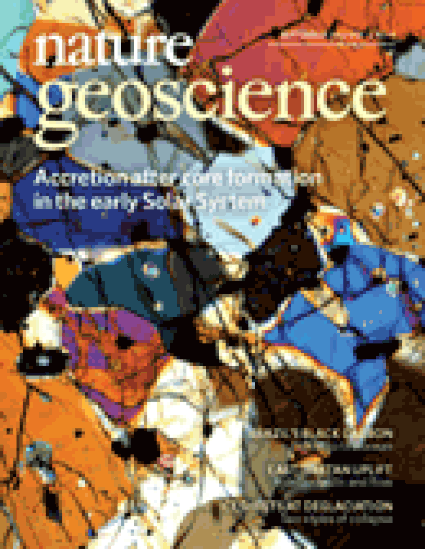
Article
Lower Crustal Crystallization and Melt Evolution at Mid-Ocean Ridges
Nature Geoscience
(2012)
Abstract
Mid-ocean ridge magmas are produced when Earth’s mantle rises beneath the ridge axis and melts owing to a decrease in pressure. This magma subsequently undergoes cooling and crystallization to form the oceanic crust. However, there is no consensus on where within the crust or upper mantle crystallization occurs1, 2, 3, 4, 5. Here we provide direct geochemical evidence for the depths of crystallization beneath ridge axes of two spreading centres located in the Pacific Ocean: the fast-spreading-rate East Pacific Rise and intermediate-spreading-rate Juan de Fuca Ridge. Specifically, we measure volatile concentrations in olivine-hosted melt inclusions to derive vapour-saturation pressures and to calculate crystallization depth. We also analyse the melt inclusions for major and trace element concentrations, allowing us to compare the distributions of crystallization and to track the evolution of the melt during ascent through the oceanic crust. We find that most crystallization occurs within a seismically imaged melt lens located in the shallow crust at both ridges, but over 25% of the melt inclusions have crystallization pressures consistent with formation in the lower oceanic crust. Furthermore, our results suggest that melts formed beneath the ridge axis can be efficiently mixed and undergo olivine crystallization in the mantle, before ascent into the ocean crust.
Keywords
- volcanology,
- mineralogy and petrology,
- structural geology,
- tectonics and geodynamics,
- geochemistry
Disciplines
Publication Date
September, 2012
Citation Information
V. D. Wanless and A. M. Shaw. "Lower Crustal Crystallization and Melt Evolution at Mid-Ocean Ridges" Nature Geoscience Vol. 5 Iss. 9 (2012) Available at: http://works.bepress.com/v_wanless/2/
